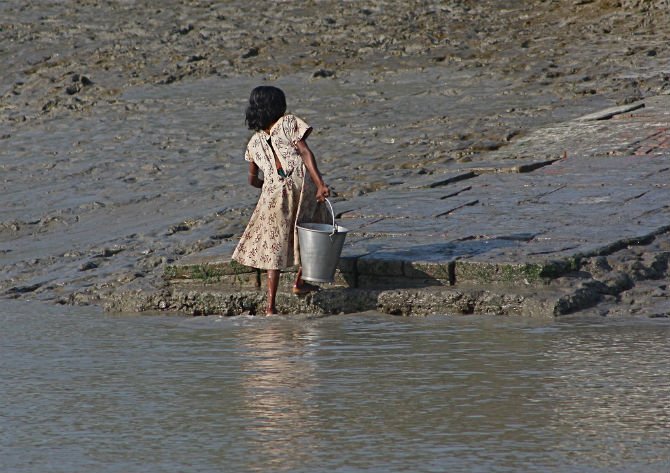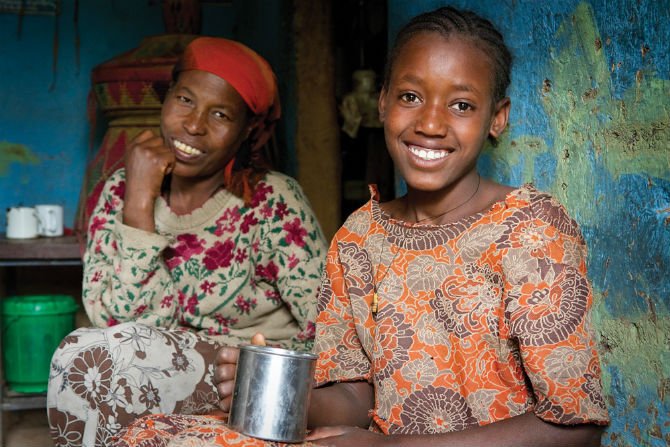Poverty is cyclical. The best indicator of if a child will end up in poverty is if her parents live in poverty.
It’s pretty simple to understand: (1) Economic classes tend to segregate (2) Meaning poor people generally live clustered together (3) Meaning that their collective political clout degrades and rarely leads to improved access to resources and opportunities.
But there is one secret weapon underused, or deliberately neglected, in most communities around the world that can break this cycle: the education of girls & women.
Yes, it’s that simple. If girls & women around the world were given an education (a full education!), then poverty would not be so persistent.
Let me explain:
Imagine you’re a young girl living in a small village that doesn’t have access to clean water and sanitation, among many other things. There’s a good chance you’ll experience continual hunger, which, if experienced frequently before the age of 2, can lead to irreversible damage.
A schoolhouse is 10 miles away, but there is a small fee for each pupil. Your parents can only afford to send one of their children to learn at this school and since boys are deemed more valuable, your brother gets to walk there every day.
So you never learn how to read or write or how to do advanced arithmetic. You are forced to work long hours to help support your brother’s education. Maybe you spend your days fetching water or scrounging for food.

And it’s likely that you’ll end up married (1 in 3 girls in the developing world are married before 18) and having kids in your early- to mid-teens. If the children are girls, then their situation will probably resemble yours, especially since you’ve never had the chance to stabilize your economic situation.
But there’s a good chance you won’t even be involved in the lives of your children, because complications during pregnancy are the leading cause of death for girls aged 15-19 globally (pause to think about how much more treacherous the road becomes for the next generation when this happens).
Now imagine the alternative:
You live in conditions similar to those described above, but the nearby school has no fee, or, even better, has an incentive program in place to ease the cultural resistance against sending girls to school. For instance, in Egypt girls who attend 80 percent of school days receive rations that amount to more than they would earn had they been working instead.
Therefore, families who send their kids to school every day will have more to eat.

Now, instead of working your youth away, you’re busy learning about the world and of the many opportunities available.
The benefits accumulate each year.
Adolescent girls that attend school are less likely to get married and have children at a young age. Child marriage would fall by 64 percent worldwide if every girl received an education!
Educated women are also less likely to contract diseases such as HIV and AIDS.
An extra year of secondary school for a girl can increase her lifetime earnings by 15 to 25 percent.
Women who receive an education are more likely to become entrepreneurs, invest in their communities and empower other women. Suddenly, the toxic cycle of poverty is turned inside-out and becomes a cycle of prosperity.
Sounds great, right? Why aren’t girls being shepherded into schools? Why aren’t book, computers, connections flooding their neighborhoods?
Well: barriers.
Cultural restrictions may be strong, schools expensive, sanitation facilities inadequate, violence against women prevalent and the pressure to work all-encompassing.
But each of these barriers can be systematically dismantled.

Programs can be enacted to make it economically worthwhile for families to send their girls to school.
Schools with adequate resources and sanitation facilities can be constructed.
Some of the cultural barriers may be more ingrained and hard to shed, but as girls become educated they become remarkable advocates for one another. Children of educated women are more likely to attend school for longer.
Global Citizens can play a role in deploying the secret weapon against poverty as well.
Globally, 62 million girls do not have access to either primary or secondary school. To close this deficit, $39 billion will need to be mustered annually (which is the equivalent of 8 days of global military spending, so not that much when you think of it that way).
Call on world leaders to make 12 years of education available to every girl in TAKE ACTION NOW.